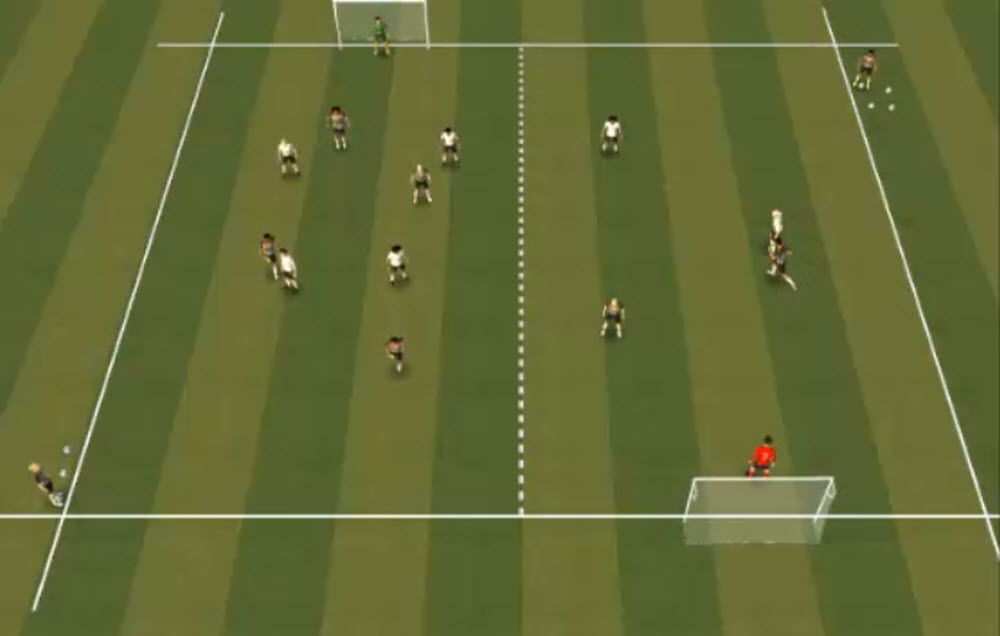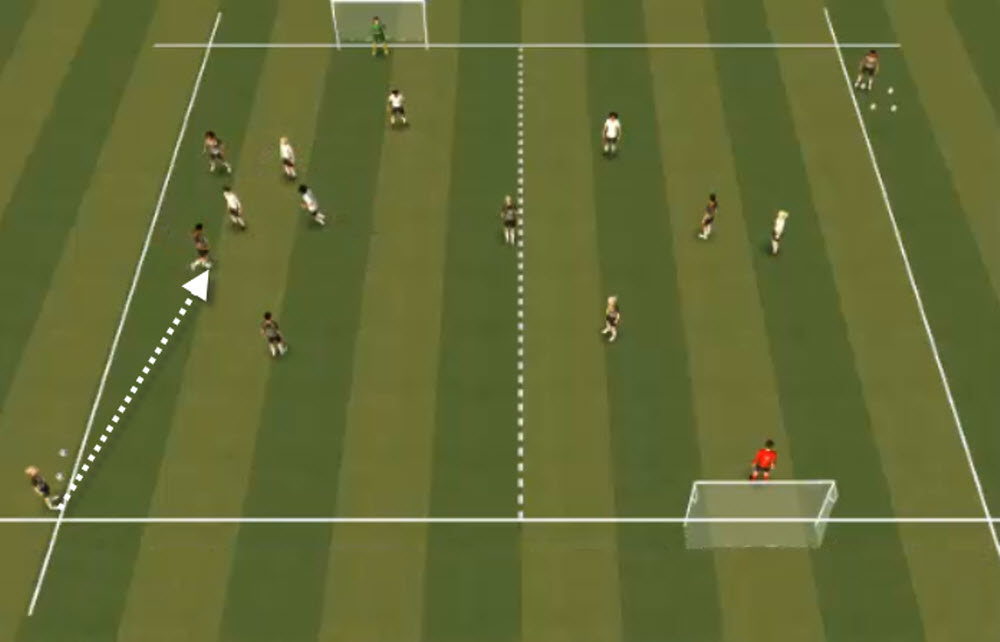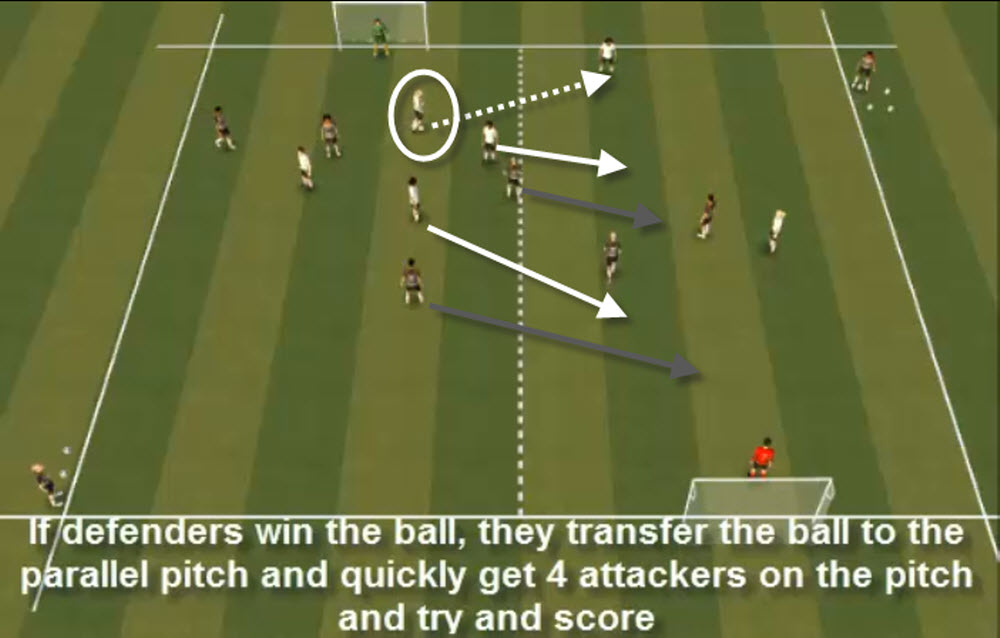02 Aug 2019
Attacking small sided game – Diagonal goals / parallel pitch
A very different and intense small sided game, with lots of attacking, defending and reacting as a team to winning and losing the ball. There are two pitches in this game, next to each other with diagonal goals on the pitch. The teams have to defend on one pitch and attack on the other. Watch the video to understand the structure and progression of the session
Organisation
- 2 x pitches, with goals and GK’s
- Goals positioned as shown in diagram
- Size of pitch to suit the number of players and age and ability
- Play 4 v 4 on start pitch, with players from each team waiting on the parallel pitch
- 2 x servers with balls at the end corner of each pitch
- Ball is served to the pitch with 4 v 4 on the pitch, attacking team try and score, defending team try and stop them
Purpose
- The purpose is a game of football. The attacking team try and score, the defending team try and stop them.
- The difference is, if the defending team win the ball, they have to attack on the parallel pitch to the one they have defended on.
- Both teams have to quickly try and get 4 players on the this parallel pitch, which means that players will have to react quickly and move to both attack and defend.
- The structure of this game will really help the players to react to the transition from defending to attacking and from attacking to defending.
- The game will also greatly help players to communicate and be organised to sort out which players will go to which pitch?
Structure
- To start, play 4 v 4 on one pitch. One team attacks the other defends
- 2 players from each team on the parallel pitch.
- If defending team or GK wins the ball, they transfer the ball to the parallel pitch and both teams now look to get 4 players each on this pitch.
- If goal is scored or ball goes out of play, ball is served to the team who conceded the goal or who didn’t lose the ball on the parallel pitch.
- Play lots of time limited games
Coaching Tips
- Players will need to communicate with each other to be organised – who goes to make the 4 attackers and defenders, who stays?
- Quick to react on the loss or winning of the ball – don’t stand and watch, quickly attack on parallel pitch – quick to defend
- Attacking team in possession, quick to counter attack, before defensive team can get organised
- Accurate, quick passing and support – quick attacks and take shooting opportunities
- Can defenders delay attacks and recover quickly to get behind the ball and defend?



